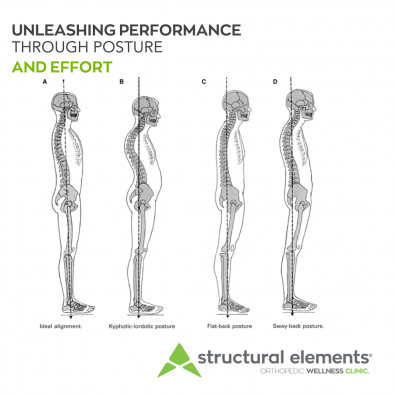Unleashing Performance through Posture and Effort: The Key to Efficiency and Well-being
In pursuing optimal performance and well-being, one often overlooks the crucial role of posture. Maintaining good posture not only enhances physical appearance but also profoundly impacts overall efficiency and functioning. In this blog post, we will delve into the concept of big picture posture, its relationship with efficiency, and the vital role of effort in achieving and maintaining optimal posture. Additionally, we will explore the metabolic taxation of using prime movers for posture and the significance of the autonomic nervous system (ANS) in regulating stress caused by poor posture.
Defining Big Picture Posture:
Big picture posture refers to the alignment and positioning of the body as a whole, considering the intricate interplay of muscles, joints, and fascia. It goes beyond simply sitting or standing up straight; it encompasses the balance and alignment of the entire musculoskeletal system. When the body is in optimal alignment, the muscles, joints, and fascia work synergistically, reducing unnecessary strain and promoting efficient movement patterns.
Efficiency and the Role of Posture:
Maintaining good posture directly contributes to overall efficiency. When the body is in proper alignment, it minimizes excessive effort and conserves energy during movement. Distributing the load evenly relieves the body's prime movers, such as the larger muscles, of unnecessary postural duties. This allows them to focus on their intended function, resulting in improved performance and reduced risk of overuse injuries. In essence, good posture acts as a foundation for efficient movement, maximizing performance potential.
Effort in Achieving Optimal Posture:
Achieving and maintaining optimal posture requires conscious effort. Our bodies naturally adopt habitual postural patterns, often deviating from the ideal alignment. Correcting these habits entails retraining the muscles and mind to adopt new, healthier postural positions. This process demands consistent effort and mindfulness. However, the rewards are significant, as proper posture enhances biomechanical advantages, reduces strain on the body, and improves energy economy. The effort to achieve optimal posture translates into improved performance and enhanced well-being.
Metabolic Taxation and Prime Movers:
Using prime movers, larger muscles responsible for primary movement, for postural support leads to metabolic taxation. When these muscles continuously engage to maintain posture, they experience increased fatigue and require additional energy expenditure. This can lead to reduced performance and increased risk of injury. By optimizing posture and redistributing the postural load to the smaller, more specialized muscles, we can minimize the metabolic taxation on prime movers, allowing them to function more efficiently during performance activities.
ANS Regulation and Stress Management :
Poor posture can cause stress on both the physical and psychological levels. The autonomic nervous system (ANS) is crucial in regulating stress responses and maintaining overall well-being. Chronic stress from prolonged poor posture can disrupt ANS balance, leading to increased sympathetic (fight-or-flight) activity and decreased parasympathetic (rest-and-digest) activity. By prioritizing good posture, we can prevent stress-induced imbalances and support ANS regulation. This, in turn, promotes relaxation, reduces muscle tension, and enhances overall well-being.
Conclusion:
In conclusion, optimizing posture and harnessing the power of effort is fundamental to unlocking performance potential and maintaining well-being. By understanding the significance of big picture posture, balancing muscular effort, and supporting ANS regulation, we can experience the transformative benefits of good posture in our daily lives.
